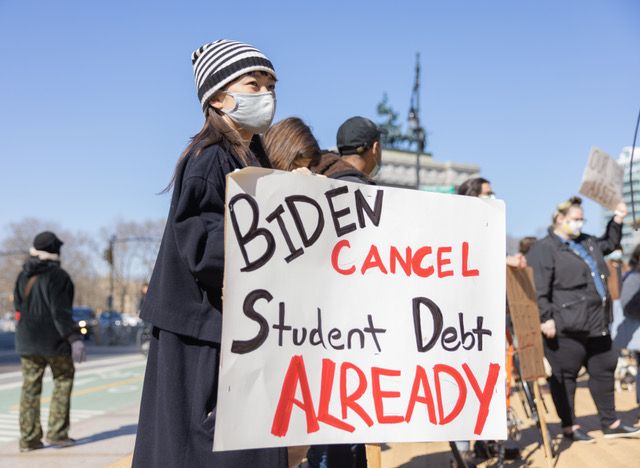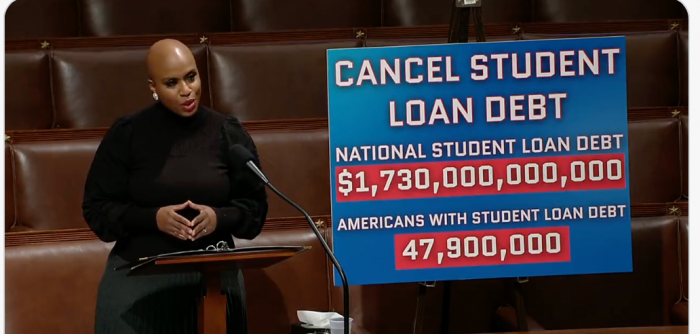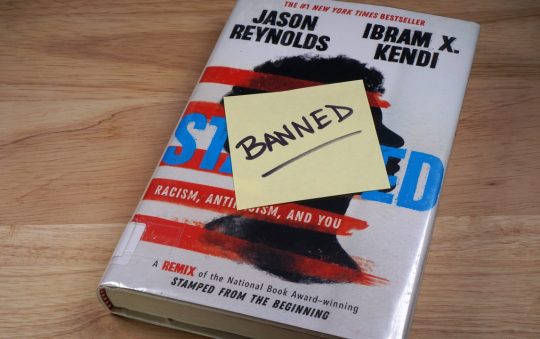
Lillian Lewis earned multiple degrees from California State University Sacramento (also known as Sac State University).
Lewis said, before the pandemic began, paying down the high student loan debt she accrued to cover her tuition and living expenses while in school put a strain on her monthly budget. Those arrears (“in the thousands”) with growing interest made it difficult for her to make ends meet.
But last month, Lewis and about 30,000 other American student loan borrowers across the United States received some unanticipated good news. The Biden administration announced a $2 billion relief program that expanded the Public Service Loan Forgiveness (PSLF) program.
“It took a huge load off my finances and will improve my credit, which was not bad anyway,” said Lewis, who works in social work and now lives in Las Vegas. “It was taking forever to pay off. Now, I don’t have to worry anymore.”
The PSLF wipes out student loan debt for borrowers who commit to public service careers or work full-time for public or nonprofit organizations.
The relief program launched about three months before the federal government lifts a freeze on student loan payments on Jan. 31, 2022. In March 2020, as the COVID-19 pandemic gripped the country, the feds paused monthly payments for Americans who owe student loans, stopped all collection activity, and applied a temporary zero-interest rate to all debt.
In California, there are thousands of African Americans like Lewis: saddled with huge balances stemming from loans they took to pay for tuition not covered by scholarships, living arrangements, textbooks, and other expenses.
In November, highlighting one borrower’s story, United States Education Secretary Miguel Cardona tweeted, “we are just getting started” to provide student debt relief for millions of Americans.
According to a report by California Student Loan and Debt Service Review Workgroup (CSLDSRW) — established under the state’s Budget Act of 2020 — and the National Center for Education Statistic (NCES), 84.9% of Blacks who earned bachelor’s degrees from 2015 to 2016 owed an average of $34,000 upon graduation.
CSLDSRW’s study also found that Californians of color default more on their student loans. Neighborhoods in the San Francisco Bay Area with the largest percentages of Black and Latino residents had 19.9% of borrowers in delinquency and 15 % in default.

In Los Angeles, borrowers living in ZIP codes with high minority populations had double the amount of default rates than borrowers in ZIP codes that are predominantly White.
U.S. Congresswoman Ayanna Pressley (D-Massachusetts) told the media at an event hosted by the American Federations of Teachers earlier this year that she, too, had defaulted on her student loans.
Black women carry 20% more in student debt than White women, according to the American Association of University Women, an advocacy faction that fights for fair pay and economic opportunities for women.
“Like 85% of Black students, I had to borrow; and like so many of those students, I had also defaulted on those loans. We know that Black and Brown students are five times more likely to default for those loans than our White counterparts,” said Pressley.
CSLDSRW’s reported that among all borrowers, Black women accrued more student debt, an average of $37,558, from their undergraduate studies than any other group.
According to EducationData.org, a website that addresses the rising cost of higher education, Black college graduates owe an average of $52,000 in student-loan debt – nearly $25,000 more than their White counterparts.
In October, Gov. Gavin Newsom signed Assembly Bill (AB) 424, the Private Student Loan Collection Reform Act, which places new documentation requirements on private student loan lenders before activating any collection activity. AB 424 becomes law on July 1, 2022.
“We’re turning commitments into reality by ensuring that our students have more access to high-quality educational opportunities, creating a change of course for generations to come and bolstering California’s innovation economy,” said Gov. Newsom said when he signed the legislation.
“Californians have thrived at our world class universities for decades, but not everyone has had similar access – today that’s changing,” he continued. Everyone deserves a shot at the ‘California Dream”
The U.S. Department of Education expects thousands more to benefit in the coming months from more federally funded debt relief programs.
Over 45 million Americans have a total of $1.7 trillion worth of student loan debt. Progressive lawmakers have pushed Biden to wipe out all federally held debts up to $50,000 and they are making efforts to stop repayments of loans.
“89% of student borrowers say they aren’t financially ready to resume student loan payments & 27% will be spending at least a third of their income on payments when they resume,” tweeted Sen. Elizabeth Warren (D-MA). “Student debt is dragging down our communities and economy@POTUS should #CancelStudentDebt.”






